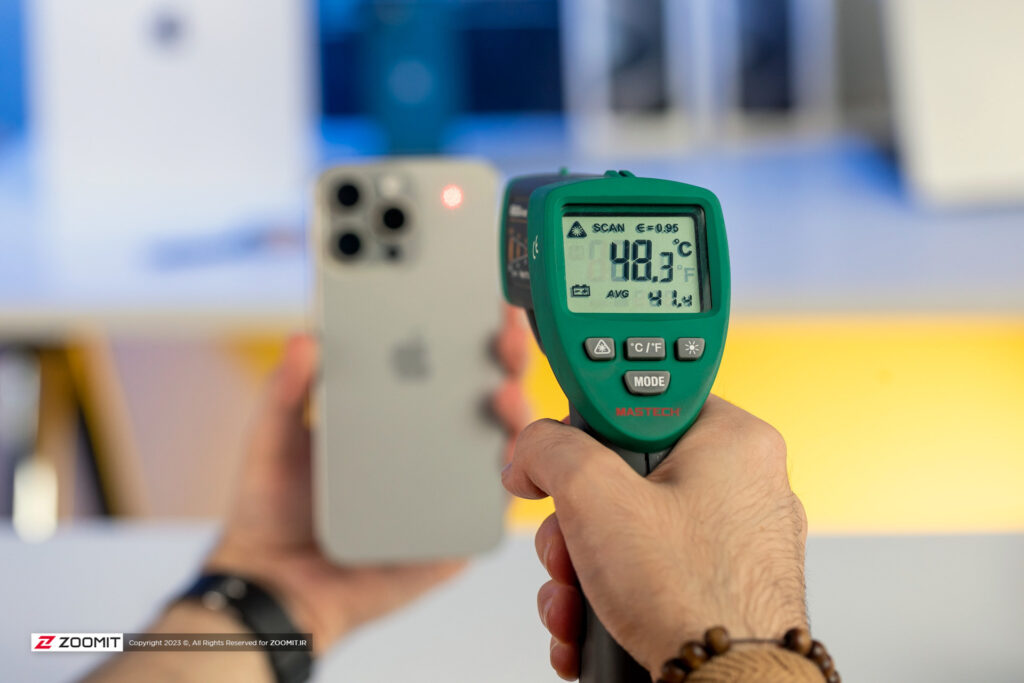We often use the term “winning formula” in reviews; But it is rare to feel its importance with all our heart. For years, Apple released its products with minimal changes compared to the previous generation, because it did not want to take risks by touching this winning formula. However, conservatism also has its own problems, and from some point on, the expectations of users and the development of competing products will force any company, even the most valuable brand in the world, to switch to new designs and capabilities.
This year, iPhone 15 Pro and iPhone 15 Pro Max were accompanied by several important changes; Titanium body instead of stainless steel, USB-C charging port instead of Lightning and the world’s first three-nanometer chip called A17 Pro, which happens to carry the word “Pro” for the first time in Apple’s Bionic chips.
It was not far from the expectation that these changes would be a problem for Apple. And of course, it was not the first time that new iPhones faced problems after their release; From iPhone 4 design flaws and weak antennas to Apple Maps bugs in iPhone 5, iPhone 6 bending and wrong accident warnings in iPhone 14.
But the iPhone 15 Pro problem was unforgivable; Not because body heat is unprecedented. It was just a while ago that when running the stress test on the Xiaomi Mix Fold 3, the temperature of the phone reached 51 degrees and we had to use a desktop fan to manage the temperature of the device!
The heat of the iPhone 15 Pro is unforgivable because it is unexpected for a company of Apple’s scale; That is when, with his exclusivity, he had reserved 100% of TSMC’s three-nanometer lithography production capacity for A17 Pro chips. Worse, the device did not get hot only during heavy use and under pressure; We even encountered overheating when taking photos with the phone, making it a challenge to hold in the hand.
To be honest, the iPhone’s trump card against the competition has long been considered to be body temperature control and, as a result, excellent stability of performance under heavy and continuous use, and this issue was always noticeable in our reviews. For example, the iPhone 14 Pro experienced a 16 to 23 percent performance drop compared to a 50 percent drop in the Snapdragon version of the Galaxy S22 Ultra; Even though the iPhone 13 Pro Max had a 28% drop in performance, its worst score was still 27% better than the best score of the Galaxy S21 Ultra!
When we tested the performance stability of the iPhone 15 Pro and 15 Pro Max for the first time, the results were shocking and indigestible; While the body temperature reached about 49 degrees, Apple’s flagship phone experienced a 50% performance drop! And that’s in a situation where this company is using the world’s first 3nm chip to show its competitors.
The hot issue with the new iPhones erupted from all corners of social platforms and was serious enough to force Apple to react, albeit after a relatively long silence. The Cupertino-based company first pointed the finger at “increasing app activity in the background”; A common thing that happens when migrating from an old phone and initial setup of a new phone due to downloading a large amount of data. We knew that this couldn’t be the reason for the hotness of the phones we reviewed, since there was no migration from the old iPhone to the new one and initial setup.
Further, Apple said it “identified a bug in iOS 17” that caused some users’ iPhones to overheat and attributed the bug to specific apps such as Uber, Instagram, and the Asphalt 9: Legends game. Apple reminded its users that it is working with the developers of these applications to fix the identified bugs. A few days later, Instagram released an update to fix the bug targeted by Apple. But for us, this could not be a convincing reason for the iPhone 15 Pro being hot, because we did not install any of the so-called problematic applications.
One of the experienced analysts named Ming-Chi Kuo He believed that the heat problem of iPhone 15 Pro is the reduction of the dimensions of the heat distribution area and the use of a titanium frame; But Apple explicitly dismissed the accusation of the titanium body and 3nm lithography of the A17 Pro chip. The giant of the technology world claimed that with a software update it can solve the heating problem of the new iPhones and assured that this solution will not affect the performance of the chip.
To be honest, it was clear as day to us that the main culprit could be nothing but the chip. This issue became clear to us especially after checking the performance and optimal energy consumption of A17 Pro. The benchmark results confirmed Apple’s claim of 20% and 10% improvement in GPU and CPU; But was TSMC’s three-nanometer lithography able to keep power consumption at a reasonable level while improving performance?
Before answering this question, let’s take a quick look at the specifications of the A17 Pro chip. Apple’s new chip uses the same six-core CPU design consisting of two high-power cores and four low-power cores, but thanks to 3nm lithography, the number of transistors has increased from 16 billion to 19 billion, and a core has been added to the graphics processor. Apple also talks about minor improvements in the architecture, a 10% increase in processor speed, 20% energy optimization in the GPU, and twice the speed of the neural engine, but it focuses most on the graphics performance, hardware retracing support, and providing a console-like gaming experience.
A deeper look at the chip shows that while the IPC of the low-power cores has increased by about 25%, there has not been much improvement for the high-power cores; Because the frequency of these cores has improved by 9% and the single-core performance has only improved by 10%. However, these improvements have been made while the power consumption of A17 Pro has increased significantly compared to A16.
When Apple unveiled the iPhone 15 Pro, it announced that the energy efficiency of low-consumption cores was three times that of its competitors, although it was found that it was humble in this field; Because the low-consumption cores of A17 Pro with the same consumption power reached a higher frequency than the middle cores of A715 in the Snapdragon 8 Gen 2 chip; When the performance of both reaches the same frequency, the power consumption of A17 Pro cores is almost half of the power consumption of A715 cores.
But this optimization is only seen in low consumption cores; When it comes to the powerful 3.78 GHz core of the A17 Pro, we suddenly face a significant increase in power consumption. For example, in multi-core processing, the chip reaches a score of 6000, which shows the power consumption of 14 watts! If we lower the power consumption, the core frequency will not be much different from A16. So, with this account, it cannot be said that the energy efficiency of A17 Pro has increased compared to before.
When we conclude that the A17 Pro chip has improved the performance by increasing the frequency of the cores, but the chip architecture has not been changed to reduce the power consumption, overheating of the body and, as a result, a drop in performance can be expected. That’s why we raised our eyebrows in disbelief when Apple claimed that the iOS 17.0.3 software update will not lower the frequency of the cores to solve the iPhone’s overheating problem.
We guessed that Apple would reduce the frequency of powerful cores to solve the problem of power consumption and body heat; But this company, in order to somehow keep its promise, did not touch the performance of the processor and took another solution.
The iOS 17.0.3 update managed to solve the iPhone 15 Pro’s overheating problem and put an end to Apple’s biggest nightmare by reducing the 50% performance drop to 22%. But in our tests after running the Wild Life Extreme stress test, which is a benchmark for GPU performance, it was found that Apple has reduced the GPU performance, which initially reached an amazing score of 4,218, by 20%, so that the stability of the chip went from 53.8% to no. Acceptable to reach 78.8%.



![This Xiaomi phone beats even the Galaxy S23 Ultra! [تماشا کنید]](https://pcjow.com/wp-content/uploads/2023/10/xiaomi-13-ultra-in-hand-blue-6522d3c63145bb2a98831ca5-150x150.jpeg)